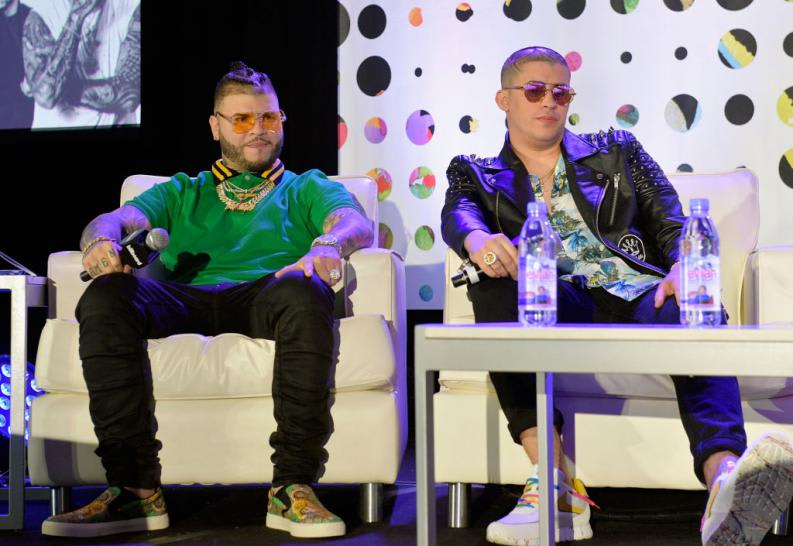Yes, there is no denying that this has been one of the strongest, if not the strongest year for Latino pop music. Luis Fonsi and Daddy Yankee’s hit reggeaton single “Despacito” spent a record 16 weeks at the top of Billboard’s Hot 100 chart, but one is left to wonder if the song would have been able to stand on its own without it being remixed along Justin Beiber, who we might add was unable to perform the Spanish verses live.
J Balvin is now treading a similar path, the Colombian’s artist hit single “Mi Gente” peaked at No. 19 on the charts, but now that it has been remixed with Beyonce, the single has become iTunes top sought song, thus poising it for a future No. 1 position in the Billboard charts. But what does this really say about Latino music?

Well according to an opinion piece written in Buzzfeed, “the fact that they needed two of America’s biggest stars to break the U.S. pop barrier is a reminder that this Latinx music moment does not necessarily signal an expanding understanding of Latinx artists or music.” While this posture carries a bleak connotation about our music, the writer of the article does make a compelling case about the situation.
Pier Dominguez, Buzzfeed’s Culture writer points out a pattern of stereotype exploitation when it comes to Latino artists making a breakthrough in the U.S. pop music industry. “Latinx performers still have to find ways to fit into industry conventions, whether by recruiting other, more familiar pop stars or by fulfilling US listeners’ expectations and stereotypes of Latinidad.” says the author.
Dominguez investigates the rise and fall of Latino artists like Ricky Martin and Shakira, who started their careers very differently than from the way the U.S. mainstream media projected them to the massess. Ricky Martin, for example, was more of a pop-rock ballad singer akin to Bon Jovi, before he was molded into the Latin lover that the American public once embraced when his hit single Livin’ La Vida Loca, and later disposed off was once the fad was over, Ricky Martin continued to have success in the Latino market, but has been largely ignored by American consumers ever since.
 Shakira’s narrative wasn’t that different, starting off as a sort of Colombian Alanis Morrissette, with her punky hair and raspy voice, the Colombian actress was soon launched into the American market with a complete makeover, including bleached hair, skimpy outfits and new dance moves reminiscent of the pop artists of the time. She enjoyed great success when she broke into the U.S. market only to be soon relegated to oblivion. When she tried to make a comeback in 2014, with her English s/t album, the singer turned to Rihanna for her lead single “Can’t Remember To Forget You”, featuring a more mature sound than what the public remembered, thus gaining widespread media criticism from an array of different outlets like Stereogum, that condemned the artist by saying “Rather than the hip-moving party music she has always excelled at, Shakira steers towards bland balladry.” Dominguez looked into this piece of criticism and wrote, “Bland is a telling adjective; US listeners seemed bewildered by Shakira’s interest in any music they didn’t deem fun or spicy or “Latin” enough.”
Shakira’s narrative wasn’t that different, starting off as a sort of Colombian Alanis Morrissette, with her punky hair and raspy voice, the Colombian actress was soon launched into the American market with a complete makeover, including bleached hair, skimpy outfits and new dance moves reminiscent of the pop artists of the time. She enjoyed great success when she broke into the U.S. market only to be soon relegated to oblivion. When she tried to make a comeback in 2014, with her English s/t album, the singer turned to Rihanna for her lead single “Can’t Remember To Forget You”, featuring a more mature sound than what the public remembered, thus gaining widespread media criticism from an array of different outlets like Stereogum, that condemned the artist by saying “Rather than the hip-moving party music she has always excelled at, Shakira steers towards bland balladry.” Dominguez looked into this piece of criticism and wrote, “Bland is a telling adjective; US listeners seemed bewildered by Shakira’s interest in any music they didn’t deem fun or spicy or “Latin” enough.”

Unfortunately, U.S. consumers views of ‘Latinidad’ are still very narrow, and pigeonhole our artists, hindering their creativity. This, of course, is in a way enabled by the media’s use of Latino music only as a commodity that requires special circumstances.
In many ways, Latinx artists in the US are still treated as one-time novelty acts, sensational media events, rather than as complex artists who can contribute to pop culture in an ongoing way. Writes Dominguez on his piece “Pasito a pasito, suave suavecito” goes “Despacito,” which roughly translates to “step by step, smoothly.” But these lyrics are also a reminder that it continues to be a slow climb for Latinx artists looking to perform at their own pace, and on their own terms.
Article inspired by name of Buzzfeed// Why Beyoncé And Bieber Can’t Fix The Latinx Pop Problem
